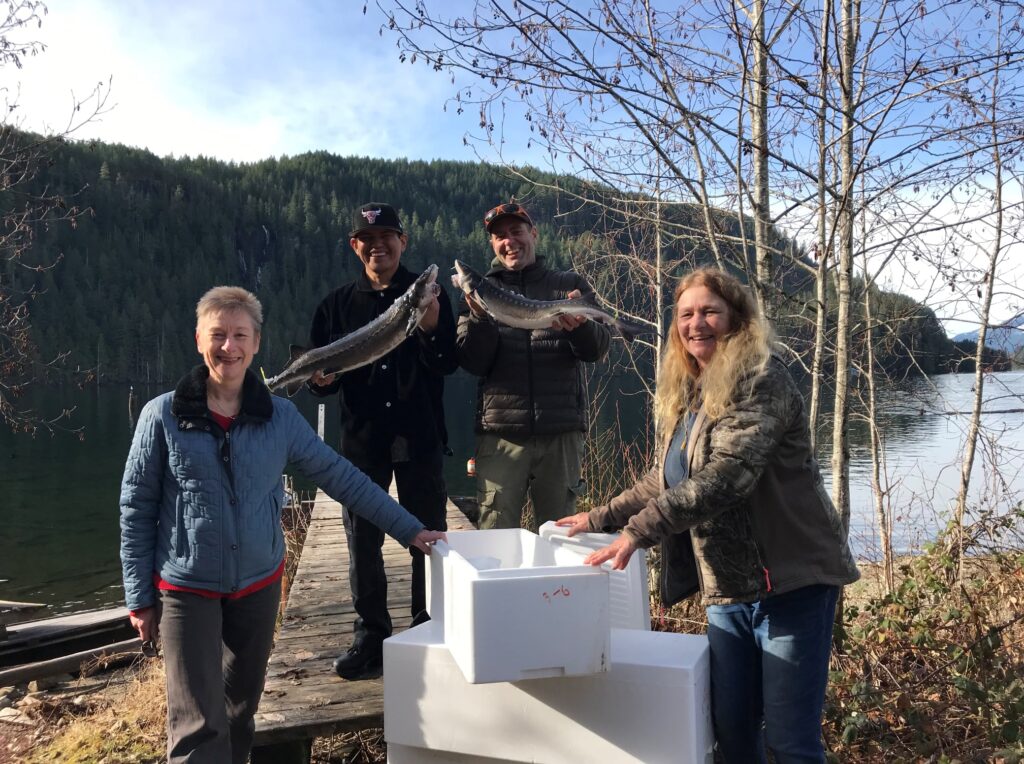
About the Project
VIU is always looking for ways to partner with industry and other institutions to create research opportunities. Trades and Applied Technology has begun to explore this arena as well and a prime example of this is the recent collaboration between VIU Culinary Arts, the Centre for Seafood Innovation at Deep Bay, and Omega Pacific – a fresh-water sturgeon fish farm located near Port Alberni. Omega Pacific was interested in determining the marketability of farm-raised whole sturgeon (head-on, dressed) at a price of $15 per pound for the whole fish. The farmed sturgeon are raised from fry purchased from VIU’s sturgeon facility so it was fitting that the adult fish return to VIU for this research.
Stakeholders
Cowichan Culinary Arts students, under the supervision of Chef Francois deJong, and Nanaimo Culinary Arts students, led by Chef Joerg Gabler, fabricated the fish and collected the data for the project. Omega Pacific provided the 12 fish used in the research. The Centre for Seafood Innovation, under the direction of Debra Hellbach, provided templates for entering the data, processed the data, and wrote the project report.
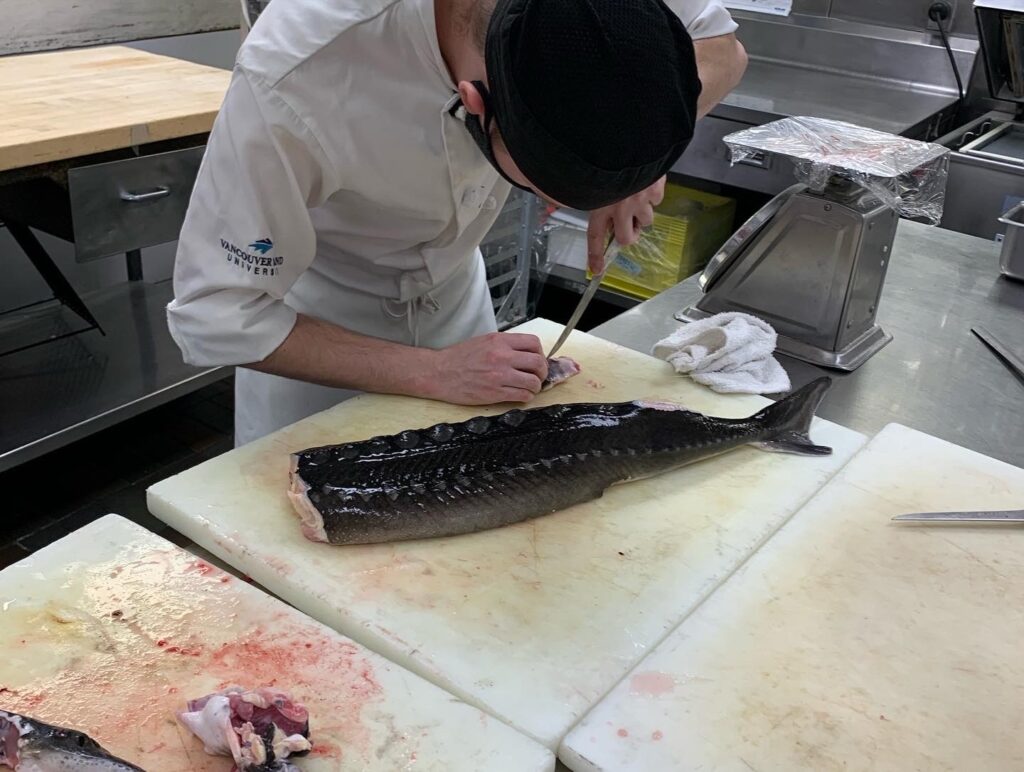
Collecting the Data
Chefs and students carefully butchered the fish and weighed every component including the skin, fat, bones, cheeks, collar, fins, and organs. Butchering the fish was challenging because sturgeon don’t actually have bones; instead they have cartilage which made it very easy to cut through with a sharp knife and possibly damage the fillets or other components. The second challenge was the wriggling and twitching of the fish even though they had been dead for two days! Students reported that it took two people to butcher the fish – one to wield the knife and the other to hold the fish down. This creepy characteristic is due to the ancient origins of the sturgeon. They are a pre-historic animal and their long evolution results in their nerves continuing to fire much longer after death than other animals.
One of the prime research objectives was creating ways to use parts of the sturgeon that might otherwise be used for fertilizer, pet food, or vitamin supplements. In other words, would cooks be willing to pay $15 per pound for a whole fish if they knew they could use most of the parts to create palatable dishes?
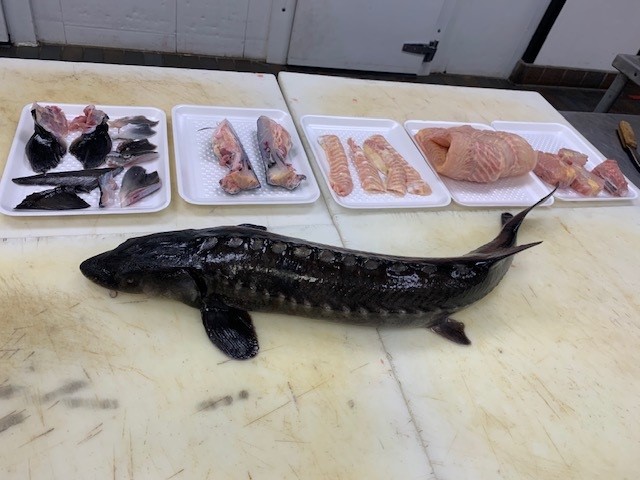
The Recipes
Students had to create a recipe using one part of the fish. The liver was turned into pate. The skin and fins were used in fish stock. The head was used to create a Charred Curried Sturgeon dish. The fillets (which are the main marketable part of the fish) were used to make a wide variety of recipes including Sturgeon Spring Rolls, Smoked Sturgeon Chowder, Sturgeon and Green Onion Dumplings, and Sturgeon Chops with King Mushrooms and Marrow Butter Sauce.
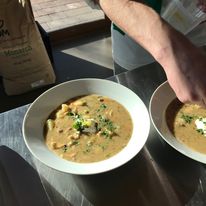
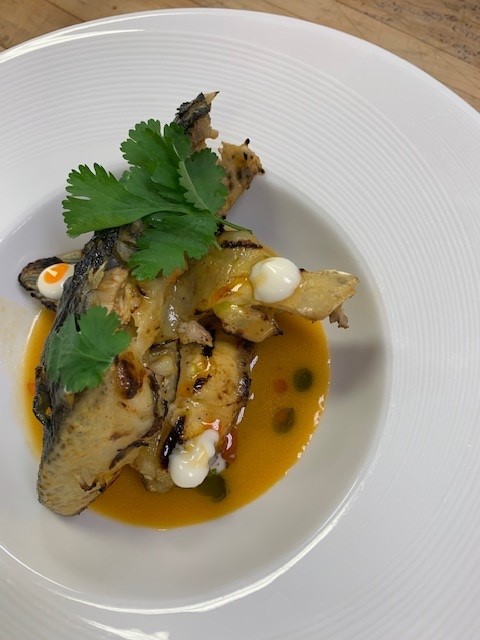
Cowichan Campus developed a unique way of cooking the sturgeon called “Spinning the Fish”. They set a wire basket of charcoal on a stove top and then hung pieces of fish on either side of the “pot of coals”. The fish had to be rotated so that it cooked evenly. Apparently it took some practice to get a piece of fish that was cooked evenly.
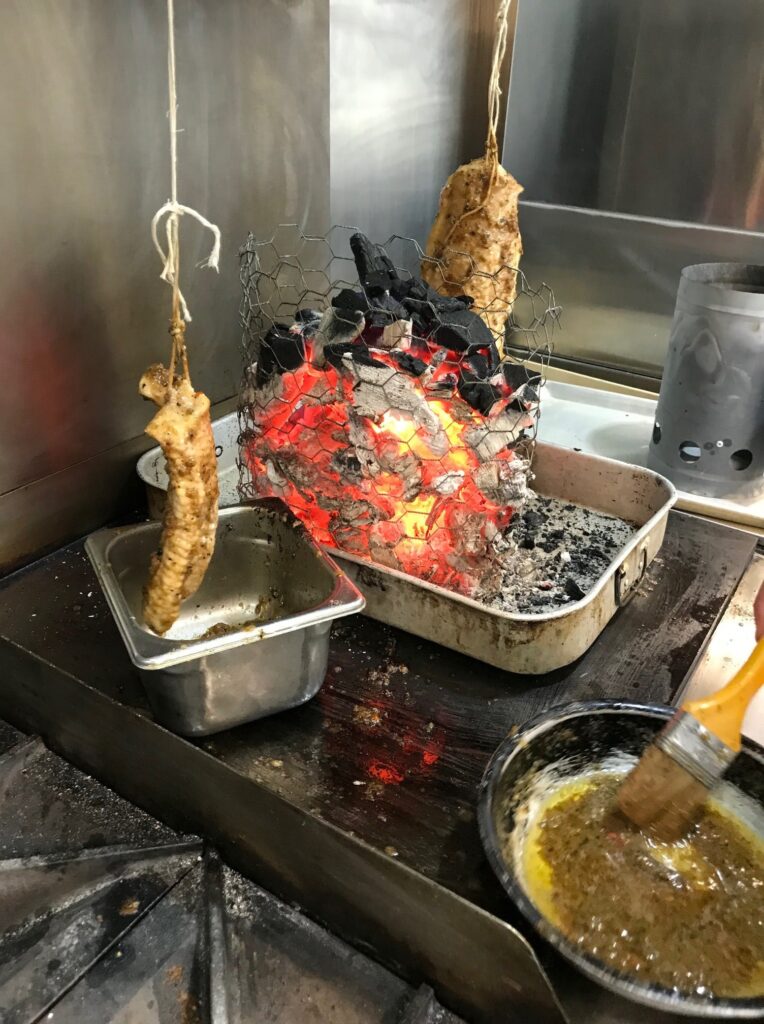
Results
The chefs and students loved the flavour and texture of the sturgeon and thought it was a superior seafood product to work with and serve. However, they also felt that the current labour shortage in the restaurant industry would make it unlikely that a restaurant would want to buy whole fish and have to do the complex processing themselves. Also, it seems unlikely that chefs would want to go to the effort of turning the non-fillet parts of the fish into a saleable product.
This means that only 33% of the fish (the fillets) would be considered useable in a food-service environment. Therefore, a wholesale price of $15 per pound for a whole fish would translate into $45 per pound for the fillets. By comparison, halibut fillets normally sell wholesale for $21.99 per pound and lobster claws sell for $56.99 per pound.
The project outcome suggests that Omega Pacific would need to look for other options to process the extra products that come from sturgeon. For example, fat comprises on average about 5% of the sturgeon’s body weight and it does not get firm when chilled which indicates that it is unsaturated fat. Could this be sold to manufacture Omega 3 supplements?
Student Learning
Students participated fully in butchering the fish, weighing each of the components, and writing down the data in the templates provided. They calculated the percentage of each body component relative to the original weight of the fish. Their data was compiled and summarized by Olivia Alexander from the Centre for Seafood Innovation. All the students were able to read this report and make the connections between the data they collected and how that data was used to draw valuable insights, conclusions, and recommendations for Omega Pacific.
In addition, the recipes that the students and chefs created, and prepared, have been passed along to Omega Pacific so that they can use them in their sturgeon marketing campaigns to inspire chefs and public consumers to purchase sturgeon.
The sturgeon research project is something that students will always remember because of the unique characteristics of the sturgeon (twitchiness), the chance to collect data and contribute to a company’s search for accurate information about their product, and the opportunity to be creative with an unusual seafood product. The students were also able to see the possibility of other career pathways besides working on a restaurant line. Working with food processors and manufacturers, pursuing a career in food science, and menu and recipe development are just some of the opportunities that could await these students.
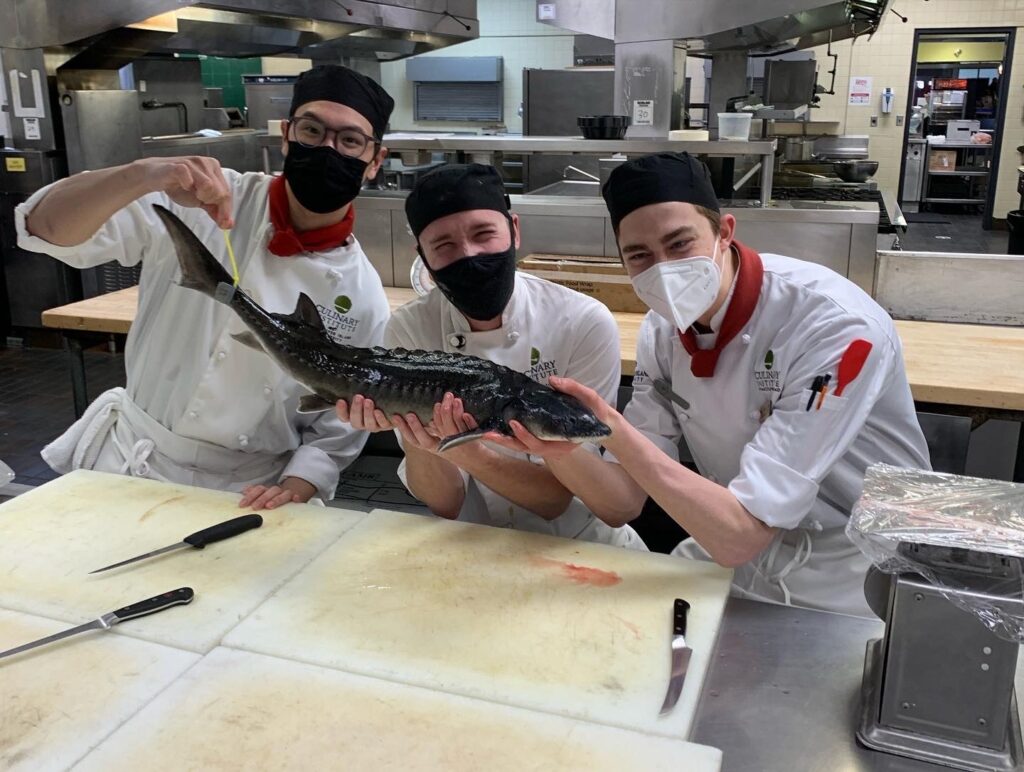

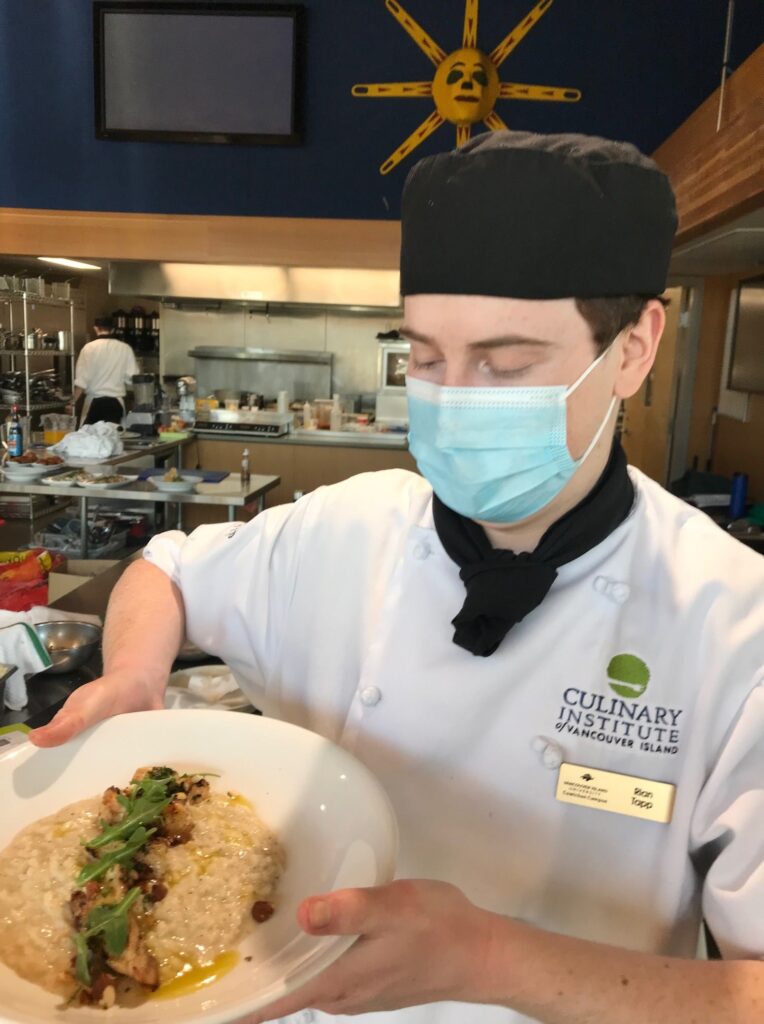
May 17, 2022 at 9:16 pm
Excellent article! Good to see the information being shared!